Greitas paleidimas / išpakavimas.
Sveikiname visus mūsų kanalo lankytojus! Šis vaizdo įrašas yra vadovas, kaip greitai ir be vargo įdiegti "Larnitech" sistemą. Konfigūracija bus atliekama parodomojo lagamino pagalba. Mokomąjį rinkinį sudaro parodomasis lagaminas ① ir dėžutė su keliais papildomais priedais ②.
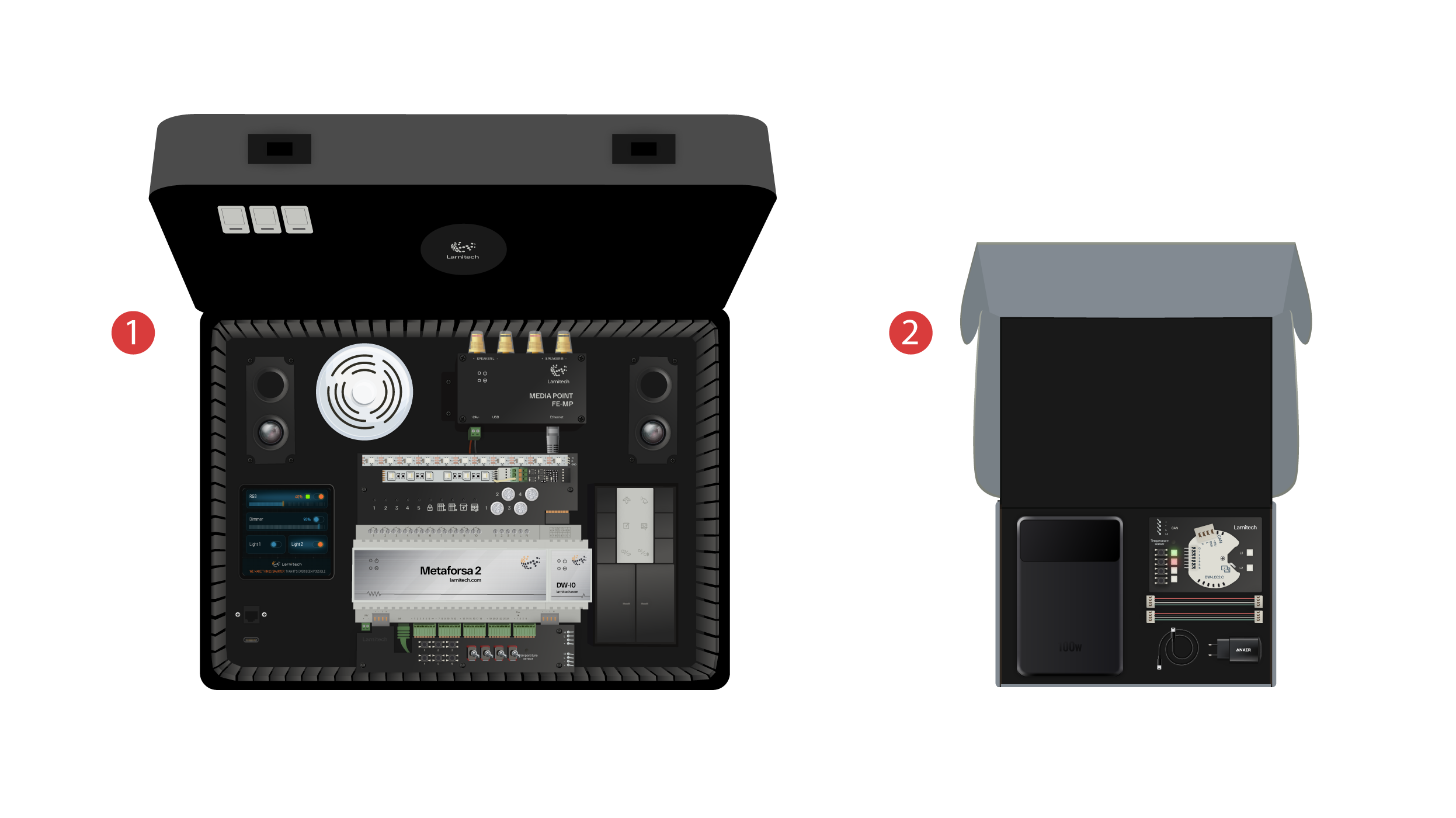
Dėžutėje yra:
① - Maitinimo blokas su USB-C jungtimi, palaikantis Power Delivery technologiją;
② - Išorinė baterija su ekranu ir C tipo jungtimi, kurį galima naudoti parodomojo lagamino maitinimui;
③ - C tipo kabelis su energijos suvartojimo indikatoriumi;
④ - 2 CAN bus kabeliai;
⑤ - Demonstracinė plokštė su BW-LC02 moduliu, prie kurio prijungtos 2 LED lemputės, 4 mygtukai su foniniu apšvietimu ir temperatūros jutiklis.
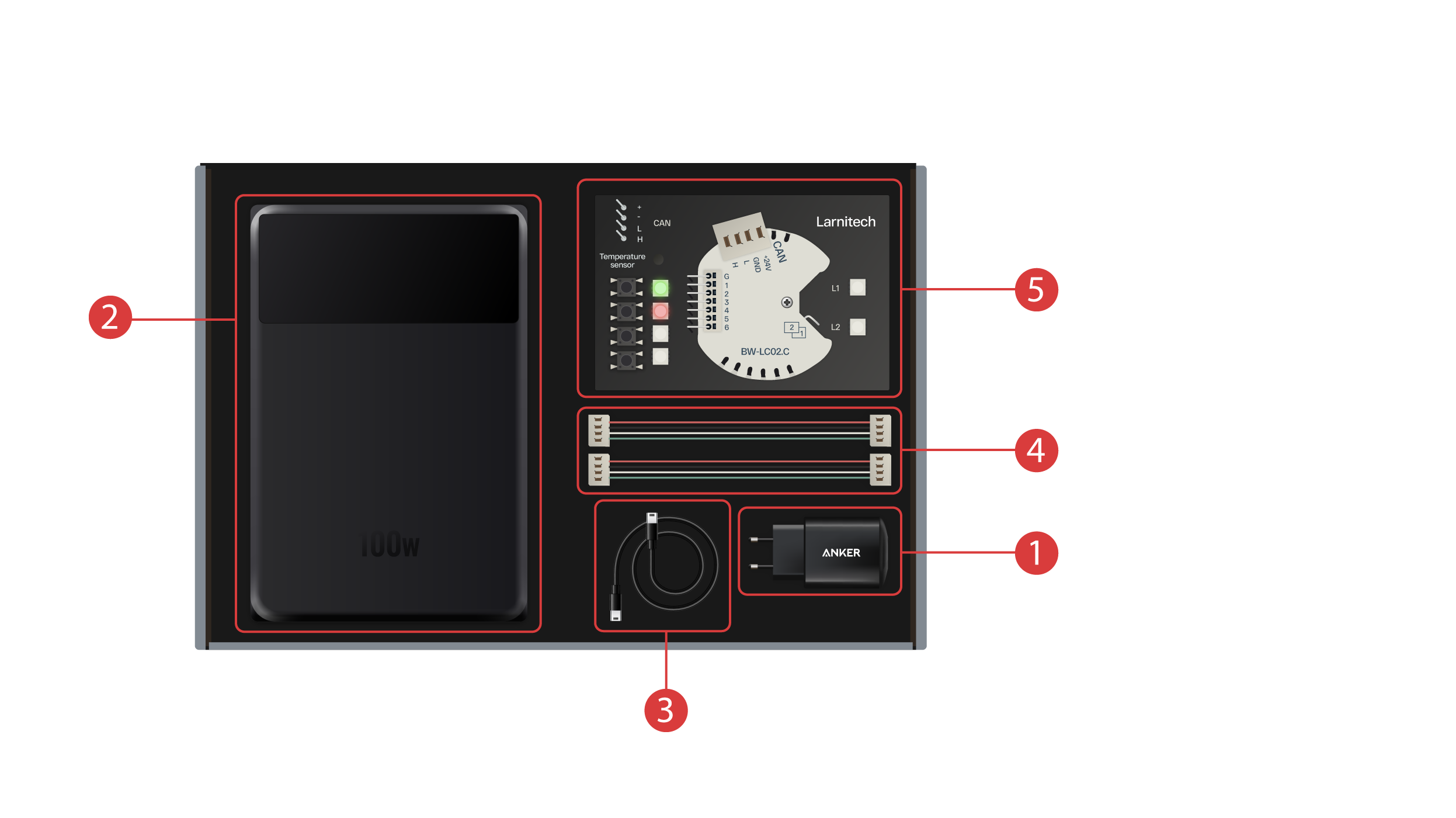
Demonstracinį lagaminą sudaro šie elementai: "Metaforsa 2" modulis.
"Metaforsa 2" turi:
① - 10 rėlinių kanalų, su prie jų prijungtomis LED lemputėmis, rodančiomis jų esamą būseną;
② - 4 reguliuojamo ryškumo kanalai, prie kurių prijungtos reguliuojamo ryškumo LED lemputės;
③ - 24 įvesties kanalai, prie kurių prijungti 6 mygtukai ④ ir 4 jungikliai ⑤, siekiant imituoti įvairius jutiklius;
⑥ - Temperatūros jutiklių įvesties kanalai, prie kurių prijungtas vienas jutiklis;
⑦ - CAN bus papildomiems įrenginiams prijungti. Prie jo prijungti kiti demonstracinio lagamino moduliai ⑧ , taip pat 2 jungtys išoriniams įrenginiams prijungti.
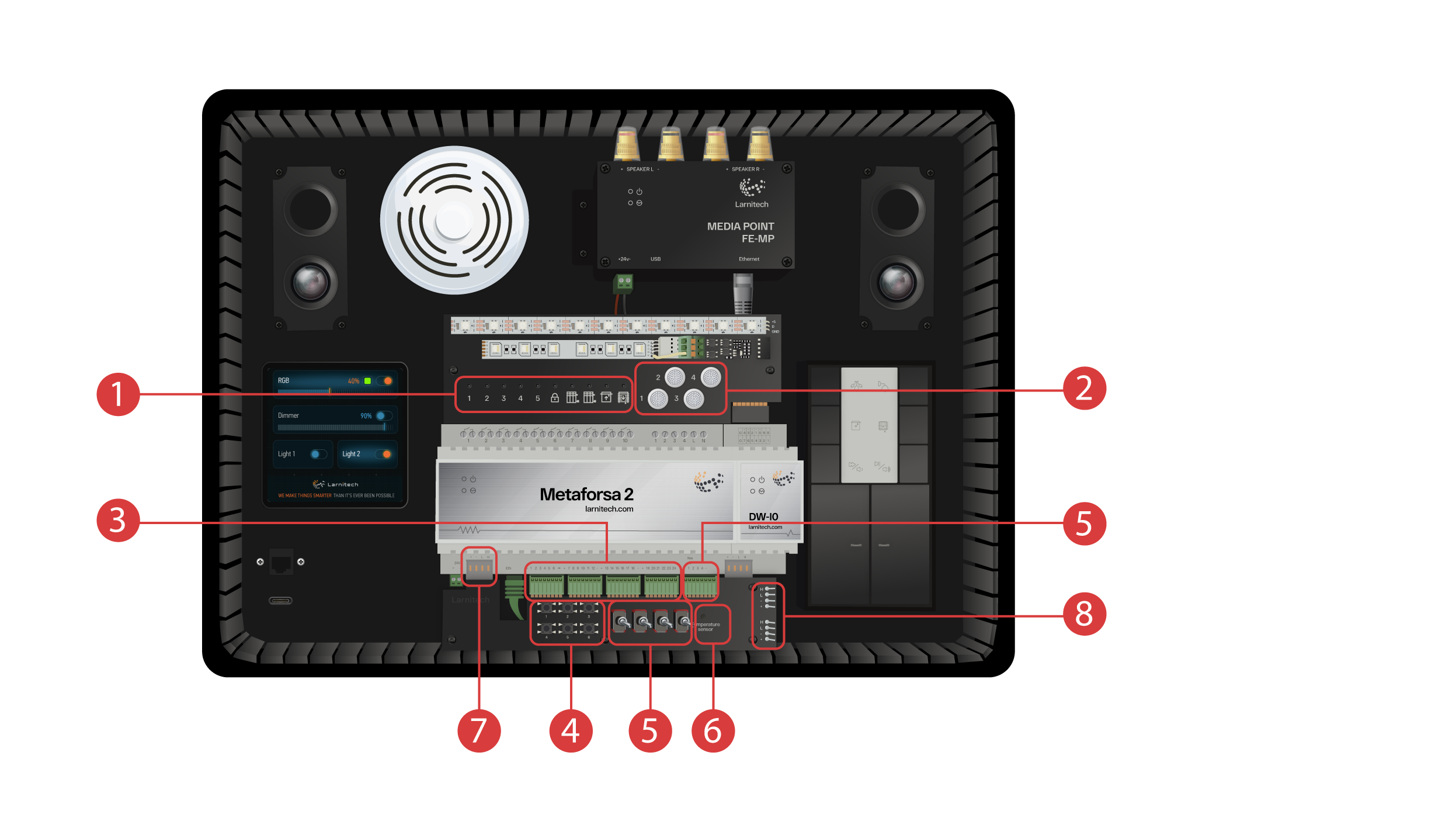
DW-IO modulis
Šis modulis turi 14 universalių įvesties / išvesties kanalų, prie kurių prijungti šie elementai:
① - 4 kanalų RGBW juosta, prijungta per AMP5V-4 ② srovės stiprintuvą;
③ - Juostelė su jai skirtomis LED lemputėmis. Kiekviena iš šių LED lempučių gali šviesti savo individualia spalva;
④ - Temperatūros jutiklis;
⑤ - Ir du mygtukai su foniniu apšvietimu.
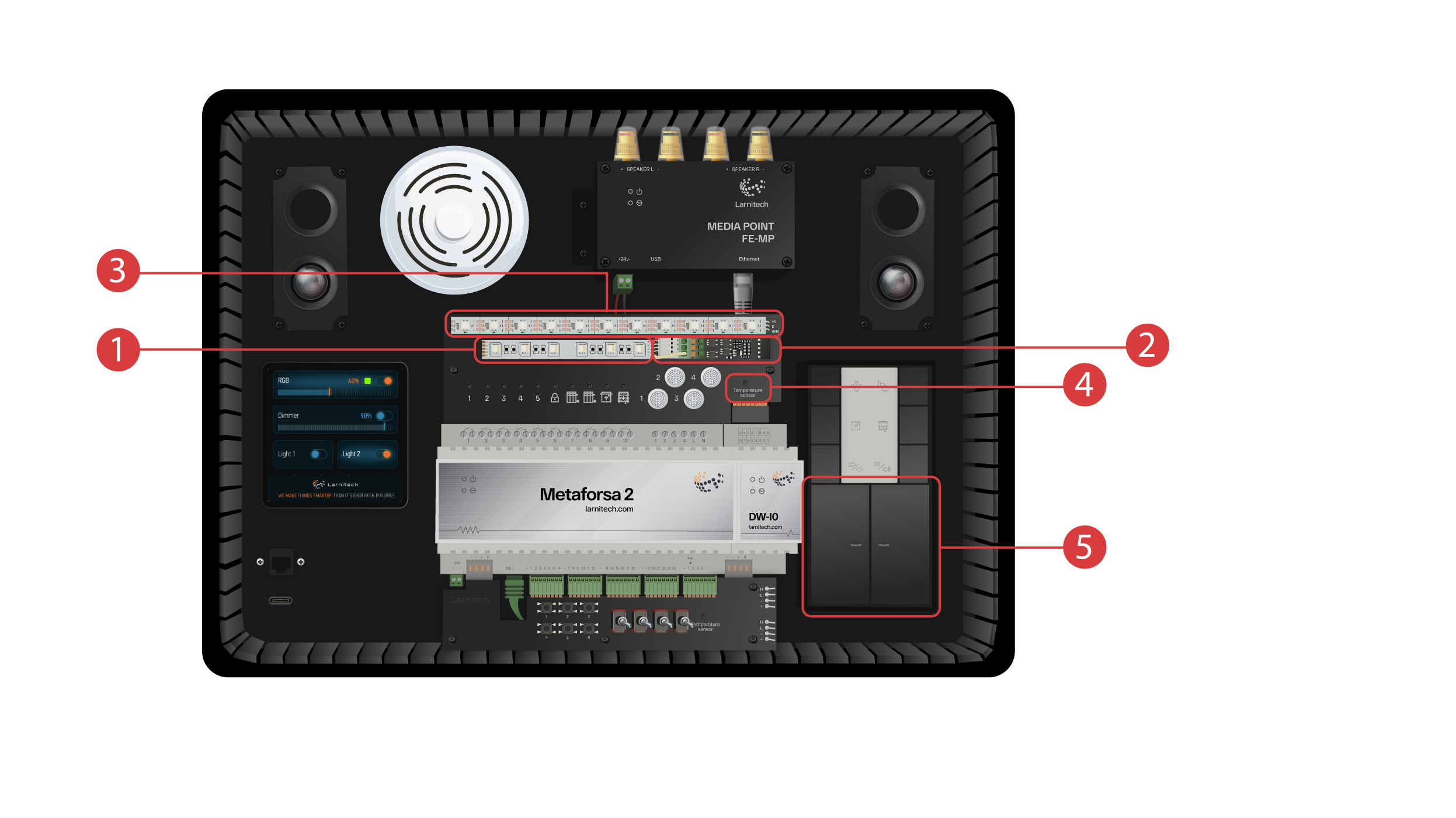
Į parodomąjį lagaminą taip pat įeina:
① - "Media Point FE-MP" su ② dviem garsiakalbiais;
③ - Šeši viename CW-CO2 jutiklis, kuris matuoja: Judesio lygį, Apšvietimą, Temperatūrą, Drėgmę, CO2 lygį ir kuris turi infraraudonųjų spindulių siųstuvą;
④ - 4 colių jutiklių skydelis LCP4, kuriame gali būti rodoma įprasta sąsaja arba sieniniams skydeliams pritaikyta sąsaja;
Lagamino viduje yra mygtukinis valdymo modulis BW-SW24, prie kurio prijungta šešių mygtukų 24 voltų JUNG klaviatūra ⑤.
Ir "Wi-Fi" maršrutizatorius, kurį galima prijungti prie interneto per Ethernet prievadą ⑥ priekiniame korpuso skydelyje arba per turimą "Wi-Fi" tinklą.
Maitinimui tiekti yra C tipo jungtis ⑦, esanti priekiniame skydelyje.
Visa demonstraciniame lagamine sumontuota įranga maitinama 20 voltų, o tai yra visiškai saugu vartotojui.
Prijunkite maitinimo kabelį ir Ethernet kabelį. Jei neturite galimybės prisijungti per Ethernet, vėliau šiame vaizdo įraše parodysime, kaip prijungti integruotą maršrutizatorių prie "Wi-Fi" tinklo.
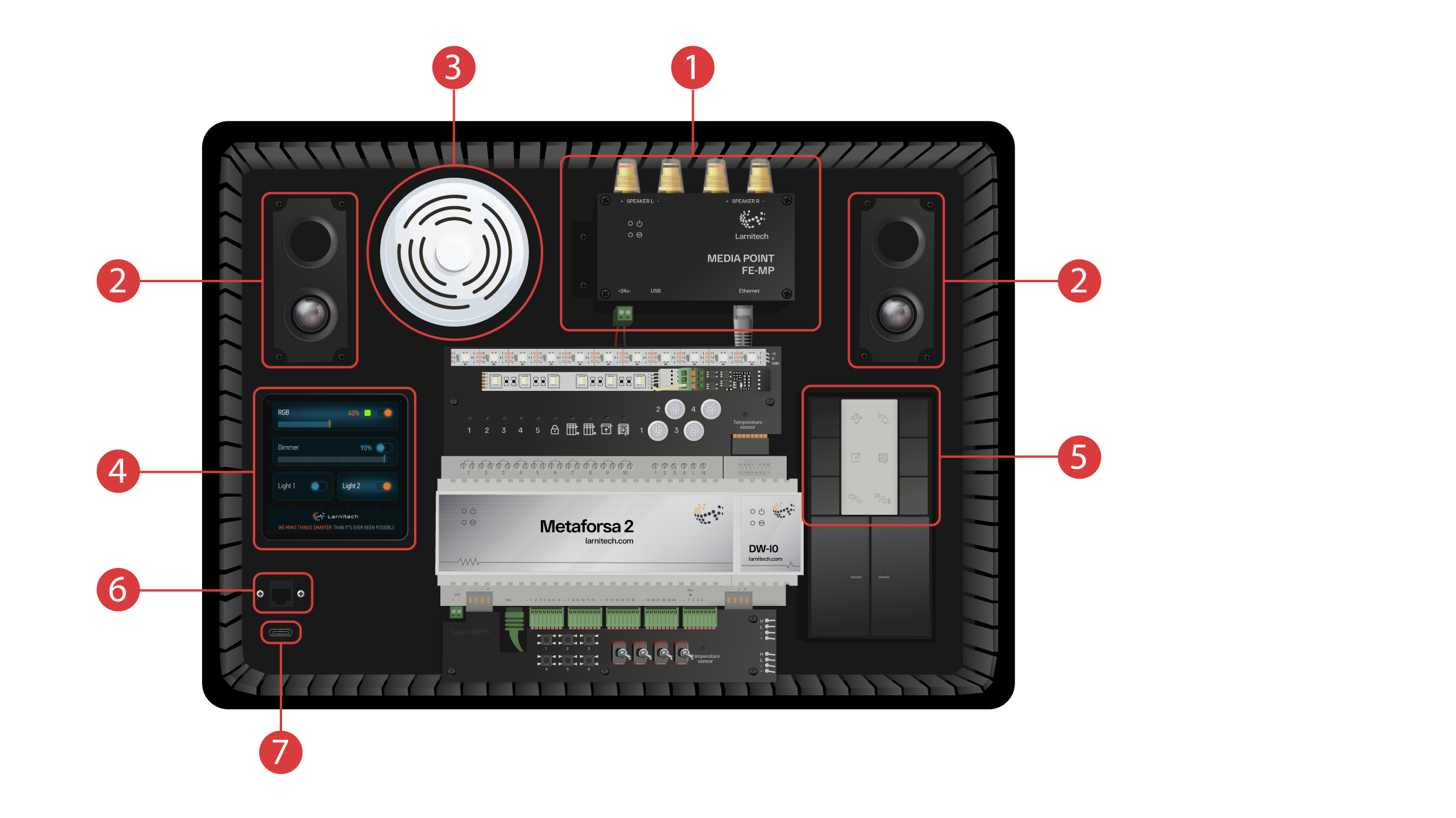
Norint tęsti darbą, į išmanųjį telefoną arba planšetinį kompiuterį reikia įdiegti "Larnitech" programėlę. Tiesiog nuskaitykite pirmąjį QR kodą nuo lagamino viršaus.
Jei įdiegus ir paleidus programėlę ryšys savaime neužsimezga, mobiliojo įrenginio pagalba turėsite prisijungti prie "Wi-Fi" tinklo "Larnitech_case_5G". Tada paleiskite programą ir nuskaitykite pirmąjį QR kodą skiltyje "Ryšiai".
Jei parodomasis rinkinys neprijungtas prie interneto, gali tekti išjungti duomenų perdavimą mobiliajame įrenginyje.

Pagrindiniame programos ekrane yra keli pagrindiniai elementai. Viršutiniame kairiajame kampe yra meniu "Srities pasirinkimas" ①.
Tiesiog spustelėkite vieną iš galimų sričių, kad galėtumėte ją valdyti ②.
Toliau yra piktogramos, leidžiančios pasirinkti vykdiklius, jutiklius, klimato sistemą, multimediją, nuotolinio valdymo pultus ir kameras ③. Dešiniajame kampe yra papildomo meniu piktograma ④. Piktogramos viduje taip pat galite matyti dabartinio ryšio būseną.
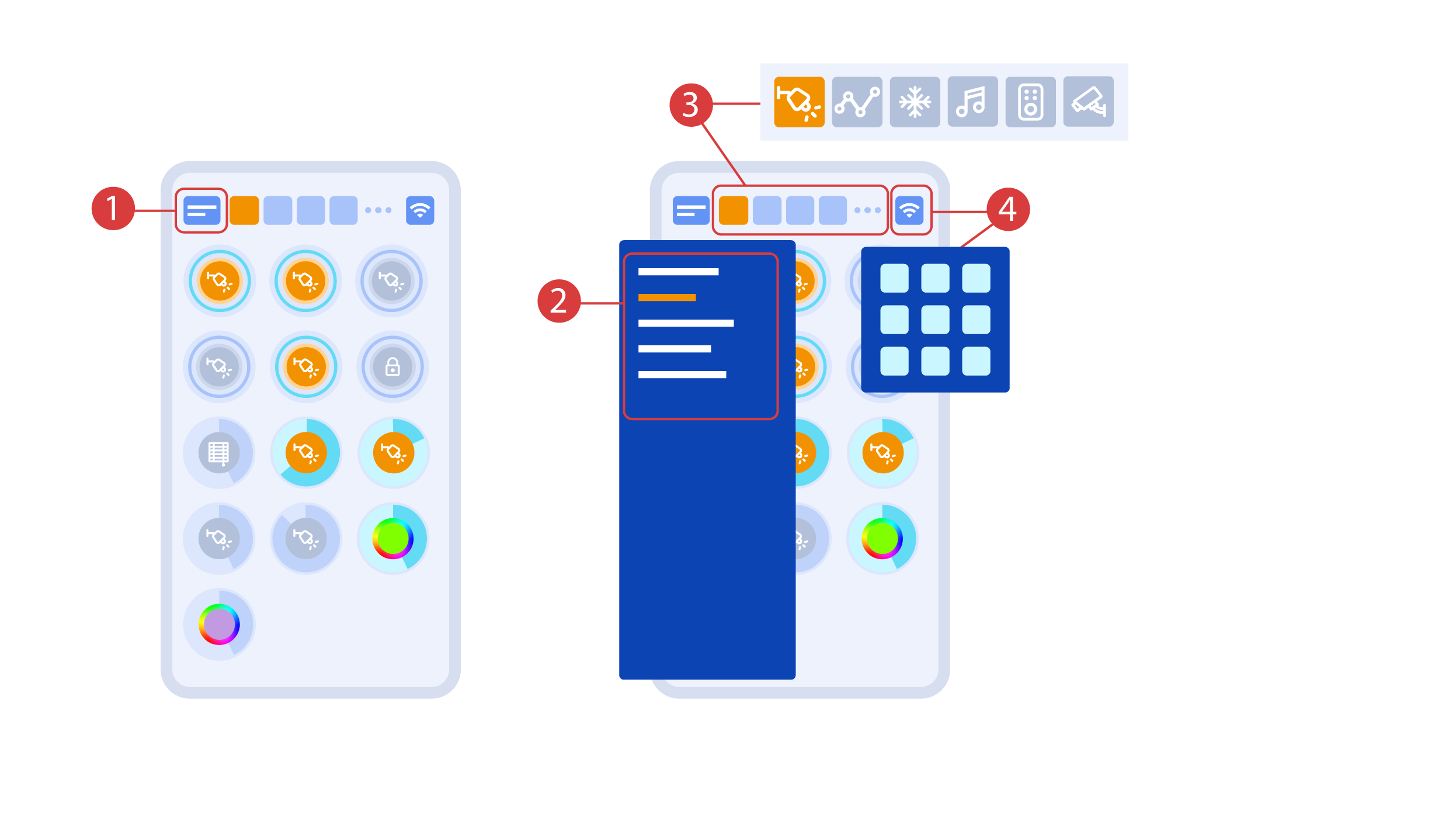
Vykdiklių įjungimas arba išjungimas ① atliekamas paprastu spustelėjimu. Norėdami pakeisti apšvietimo lygį ②, šviesų spalvą ar uždangų padėtį, spustelėkite dukart. Norėdami peržiūrėti šio vykdiklio arba jutiklio būsenos istoriją ③, paspauskite ir palaikykite piktogramą vieną sekundę.
Trumpai paspaudus fizinius skydelio mygtukus, šviesa įjungiama arba išjungiama. Norėdami pakeisti šviesos ryškumą, paspauskite ir palaikykite mygtuką.
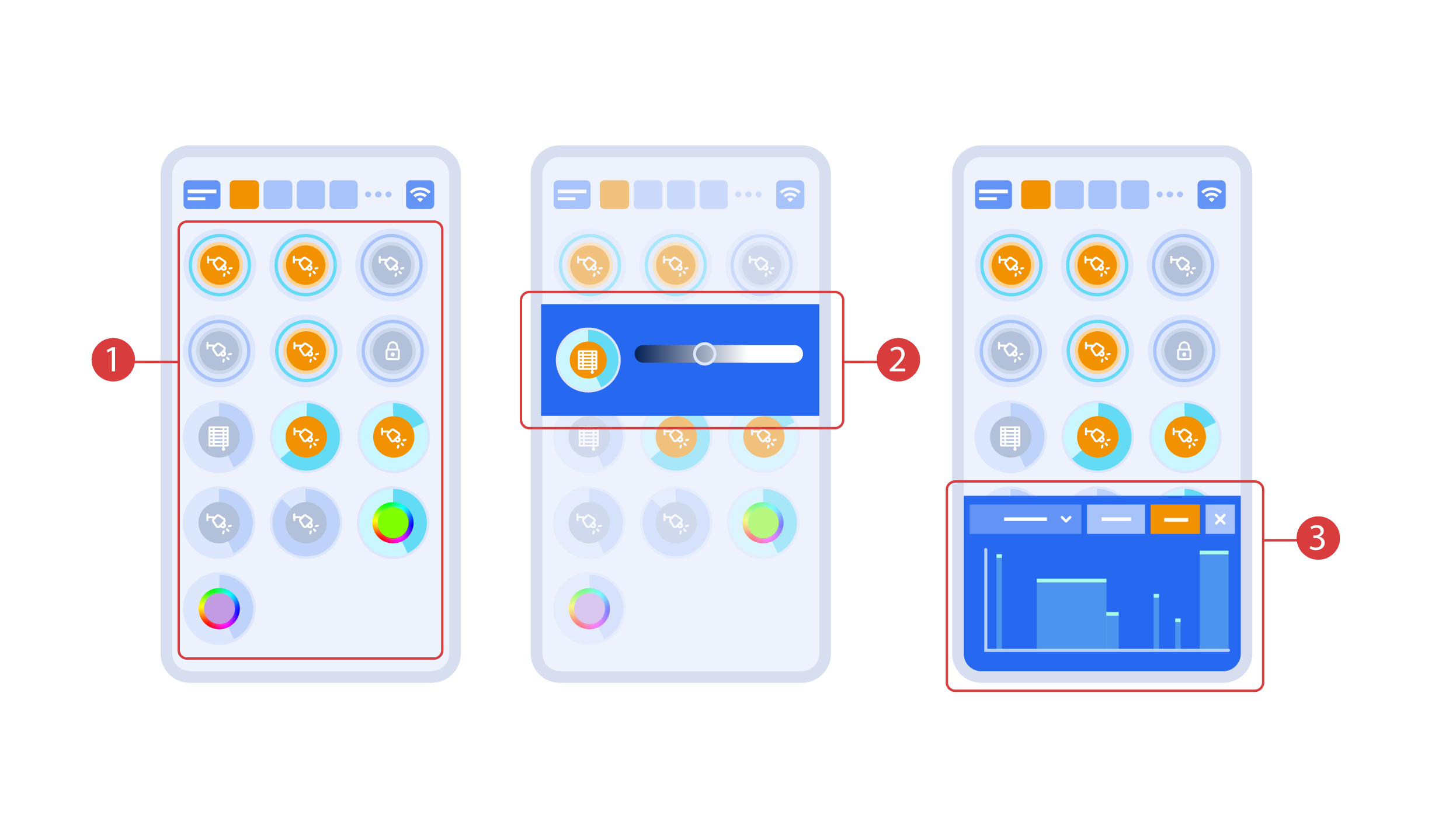
Norėdami parodyti "Plug and Play" funkciją ① , konfigūracijos srityje atidarome vykdiklius ir prijungiame modulį prie CAN bus. Sistema savaime aptinka naują modulį ir prideda jį prie srities "Konfigūracija" ②, kur galime akimirksniu valdyti naują modulį.
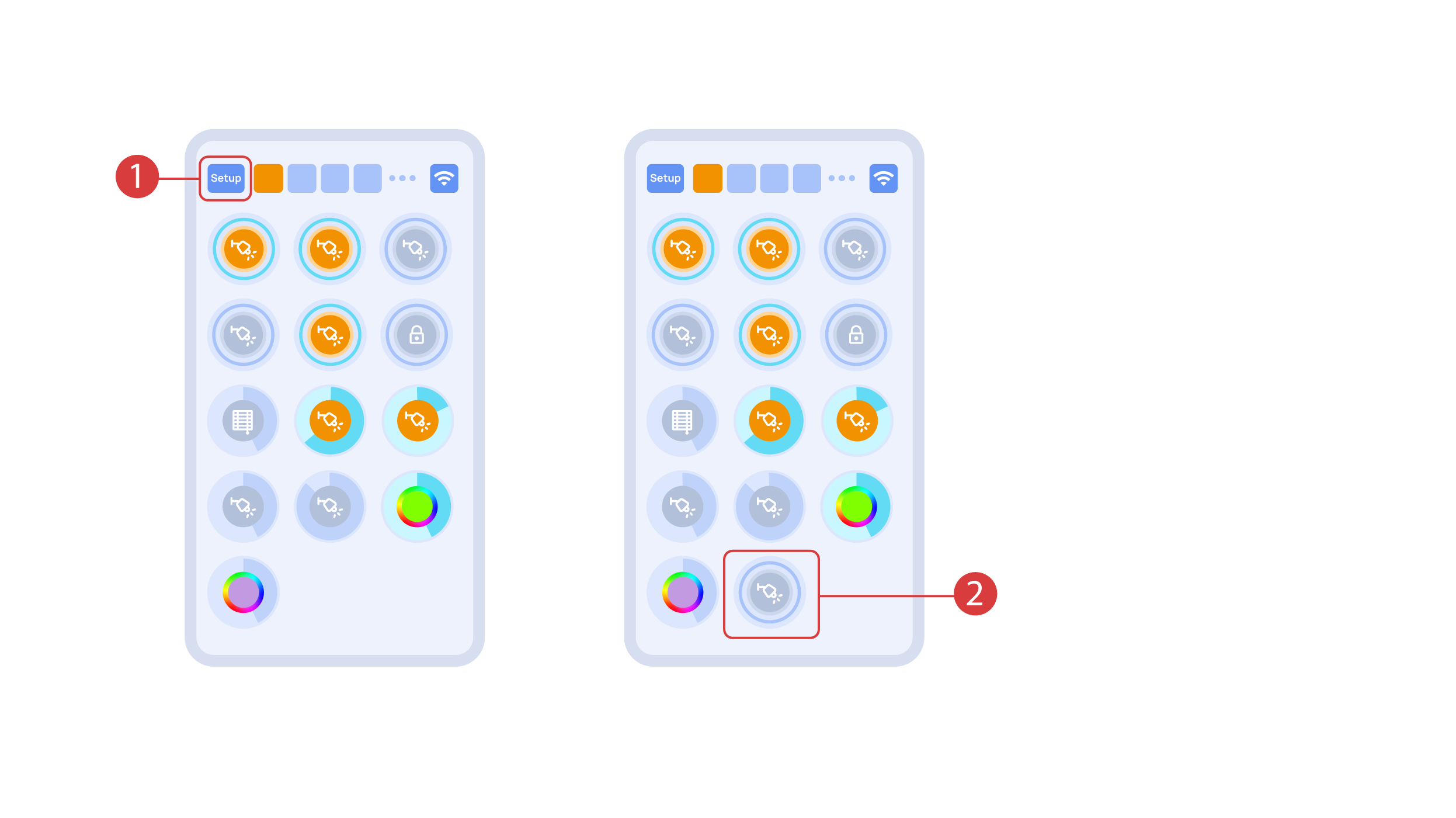
Now we can set up these executors. In order to do this, enter the additional menu ① and activate the edit mode, by pressing the appropriate icon .
Now we are in the edit mode ②, which can be seen from the appropriate notification in the top part of the screen. In this mode, when we press and hold an icon, we can move it among other elements and place it into another Room by placing it in the Area-choosing Menu and then choosing the area that we need. A long press ③ of the element starts the menu, from which we set up the current element.In the ‘General’ ④ section we can change the name of the element, add a voice command for it, change an icon or add the element to ‘Favorites’.
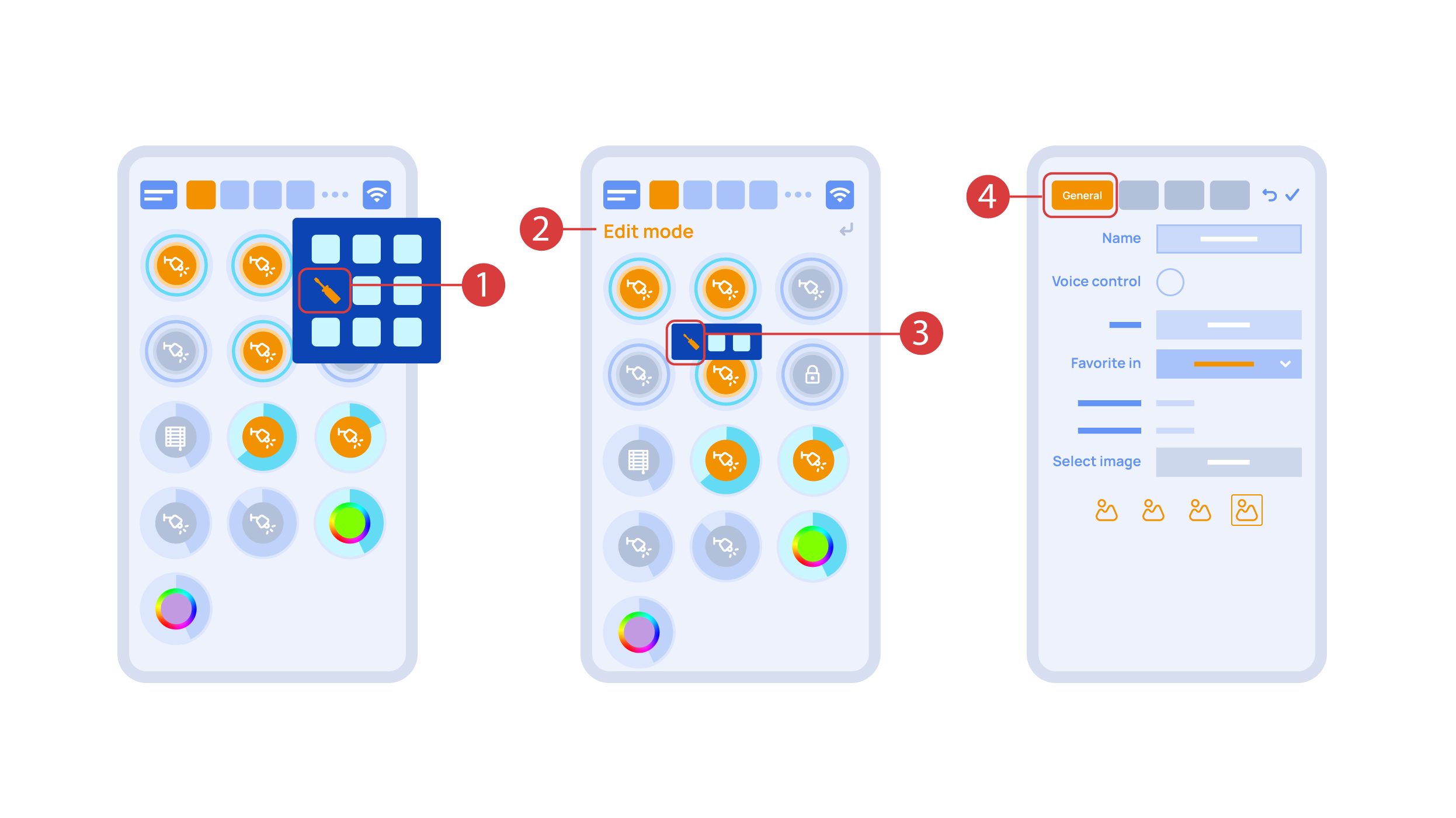
‘Auto’ section ① lets us activate the automation with a few clicks, as well as set up its parameters.
In the ‘schedule’ section ②, you can determine the schedule when the given element will turn on or off, including by using the time of the setting and rising of the sun.
The ‘Switches’ tab ③ lets you bind a button to control the executor.
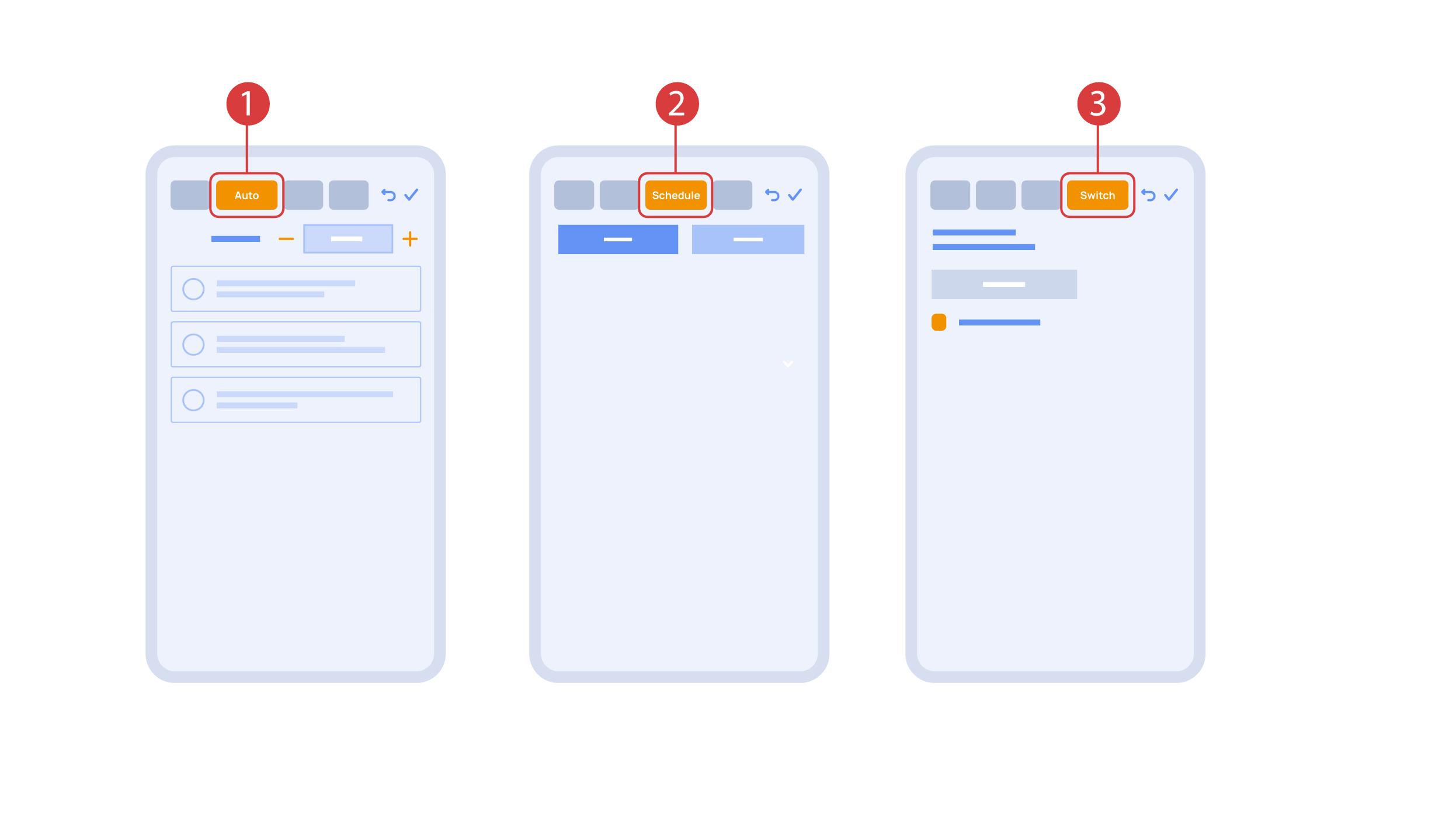
In order to do this, ① we press the button we need to bind. The system displays it, after which we press ‘Bind’② and save the changes. Now this button controls the executor
The ‘Switches’ tab ③ also features additional button setup options. For example, we can program the executor to be controlled with a double or triple click of a button, as well as define an action performed by this, for example ‘only turning on’ or ‘only turning off’ an executor. In this case we are setting up the button to do the following: one click will cause the lamp to toggle, a double click will turn it on and a triple click will turn it off. In this way a single button can perform up to five different actions.
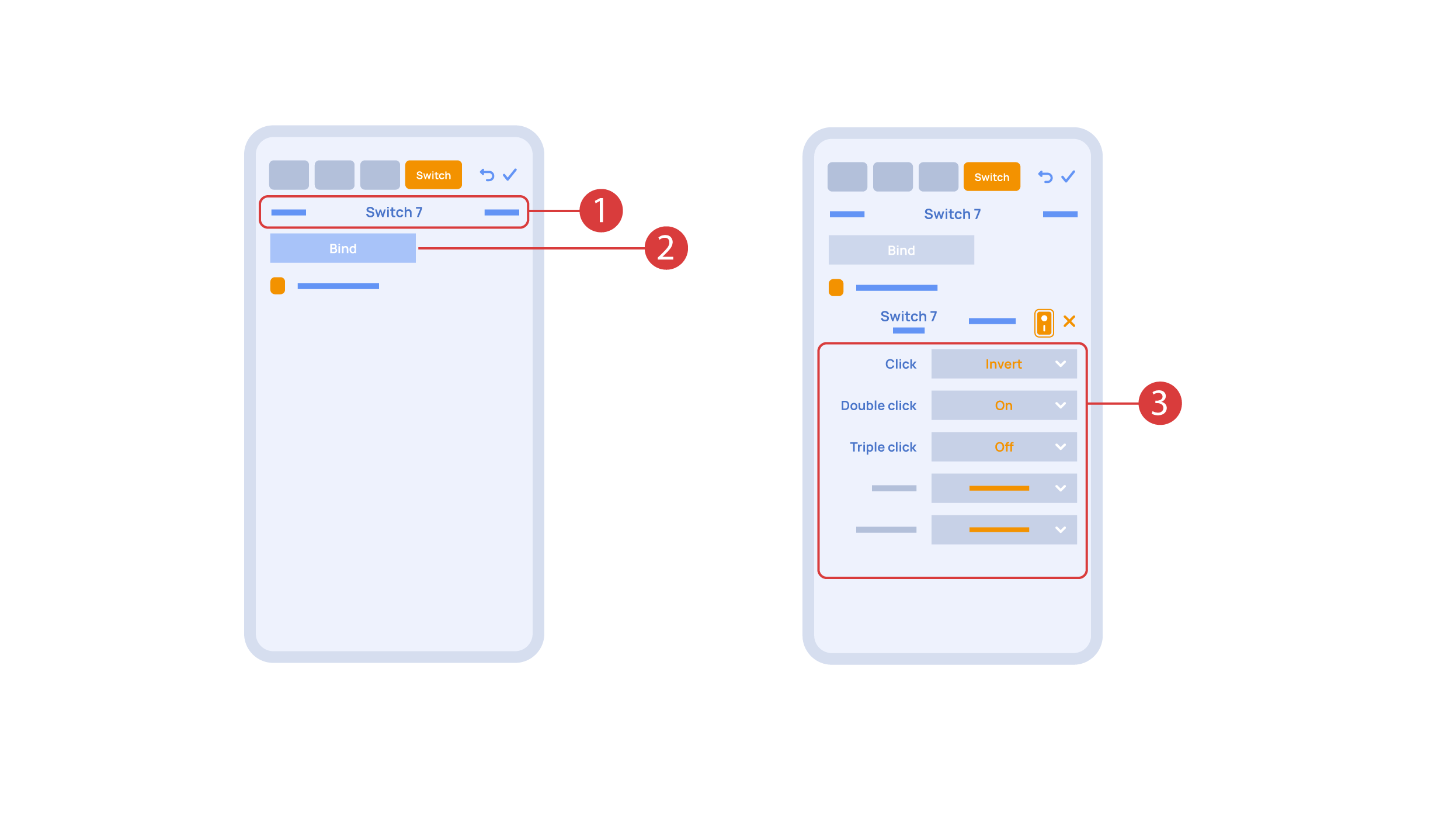
Let’s also set up basic automation of turning an executor on or off with the help of a motion sensor.
The ‘Auto period’ ① option sets the time for which the automation is disabled after an executor is manually controlled.For our demonstration purposes, we will set it to zero.
Then we will activate the automation ② to turn on the executor when motion is detected. We choose the motion sensor ③ and the level of motion ④. We can also choose a light sensor and its parameters.
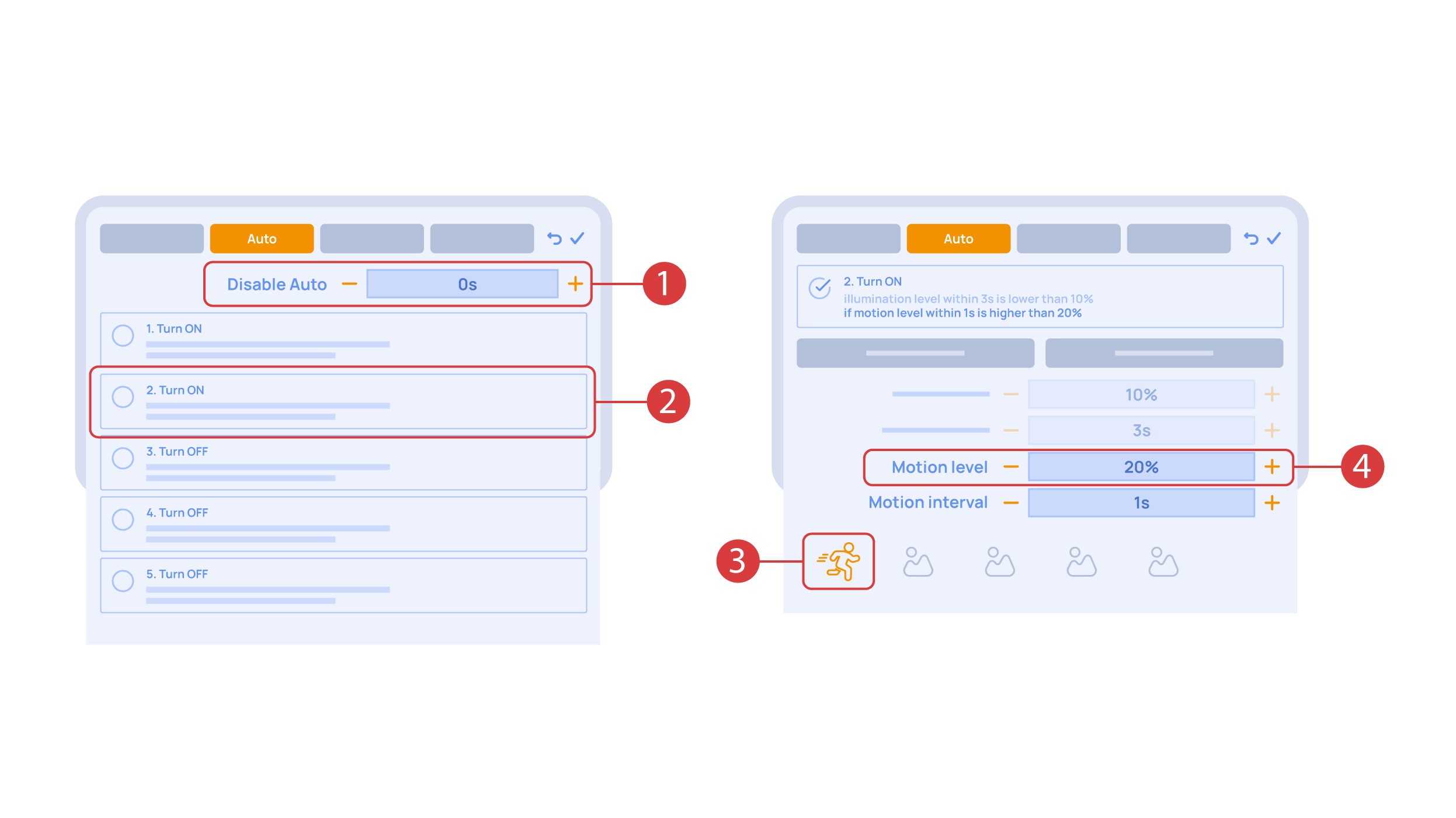
Now we will activate turning off ① of an executor if there is no motion: we choose the same sensor, set a lower threshold and a minimal time.Save the changes.
The extra ‘A’ icon ② will be added to the executor icon, meaning that automation has been set up for it. Now the lamp will be turned on when motion is detected and instantly turned off when no motion is detected.
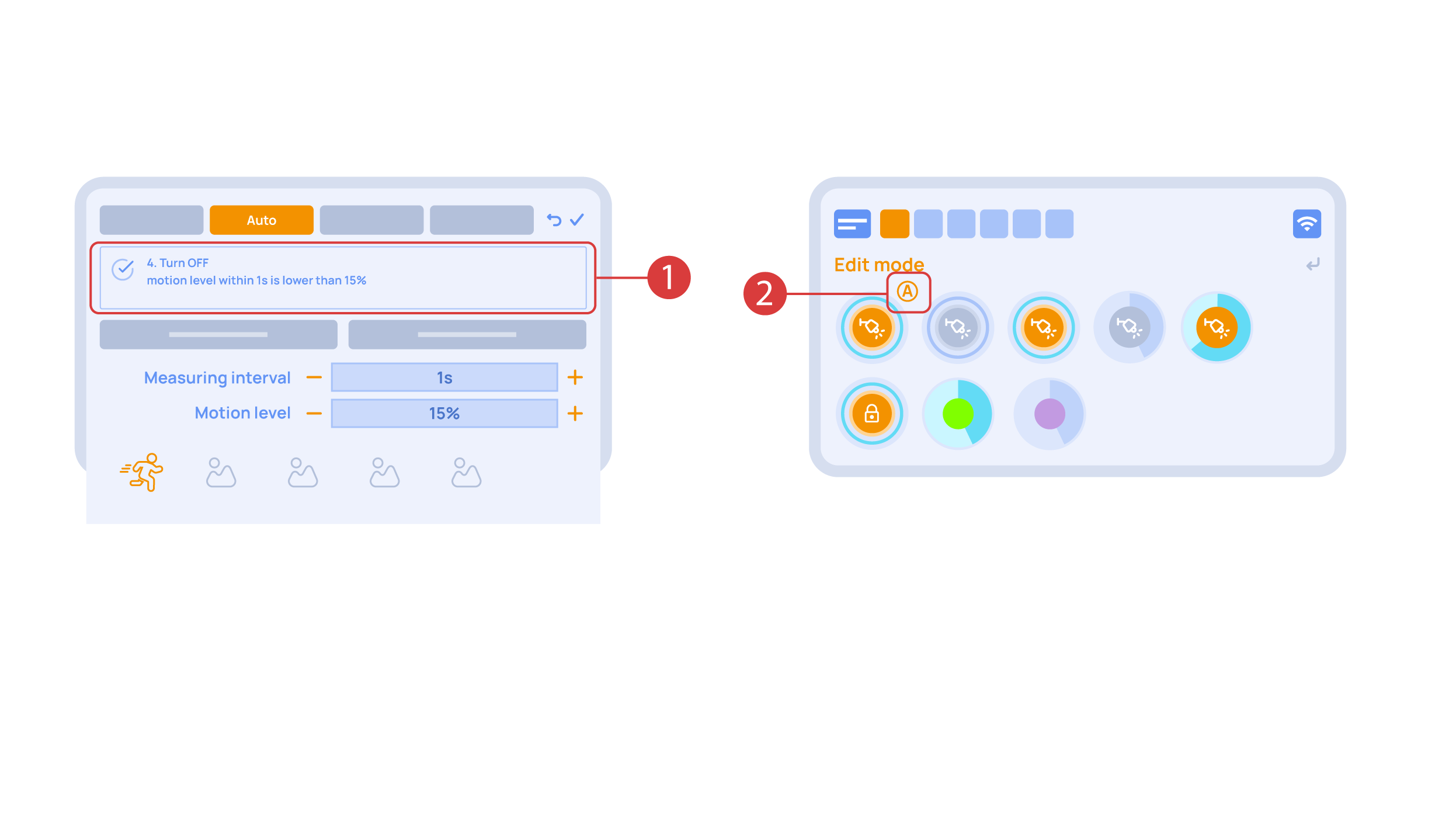
Let’s create a light scheme. For this we need to select the appropriate item in the additional menu ①. Give the light scheme a name ②.
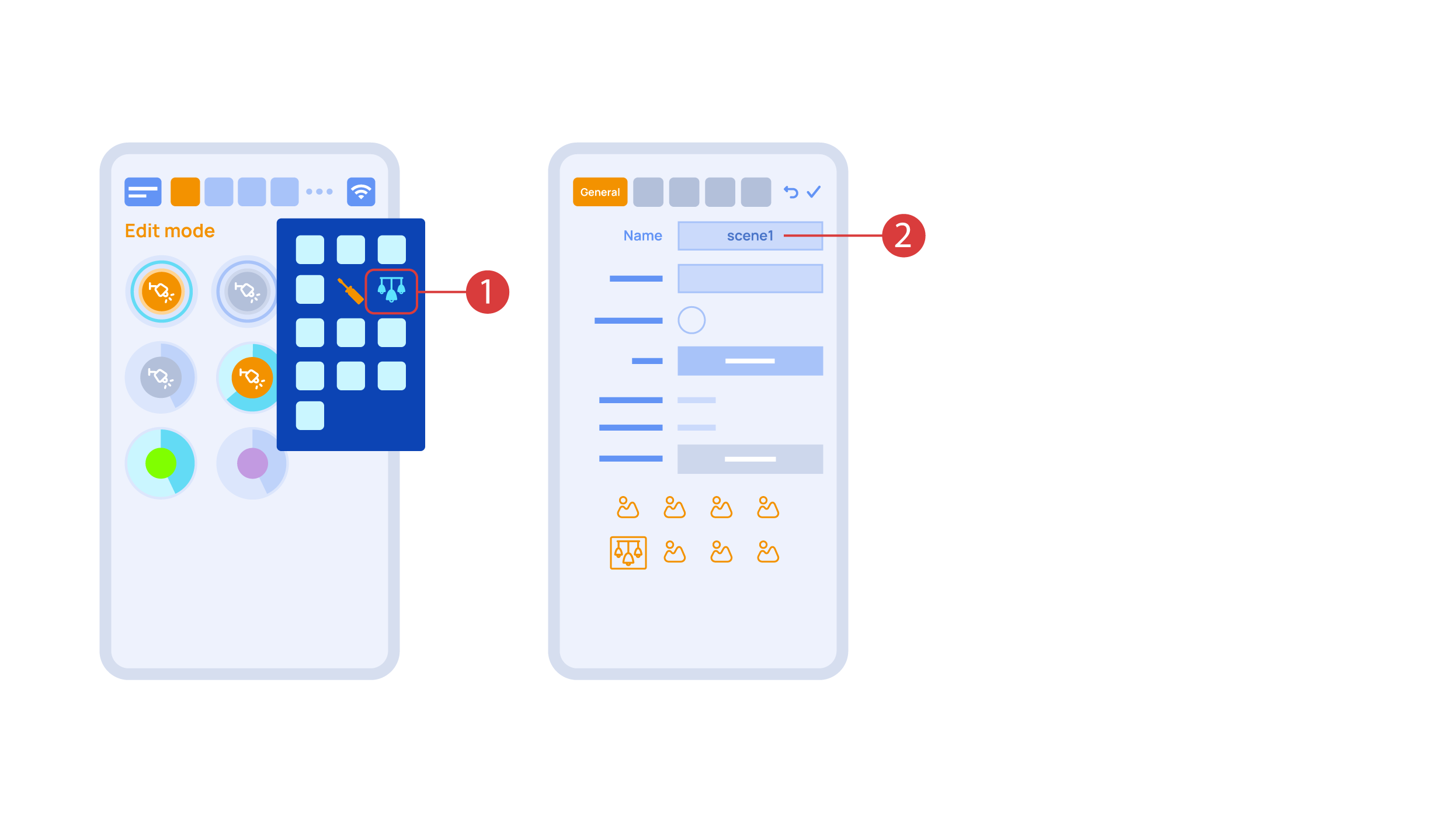
In the ‘State’ tab, use a long press to add the lights we want to use into the light scene ① and set up their state ②. ‘Auto’, ‘Schedule’, ‘Switch’ tabs are the same for all the executors.
Save the changes and we are able to use the newly-created light scheme ③ immediately.
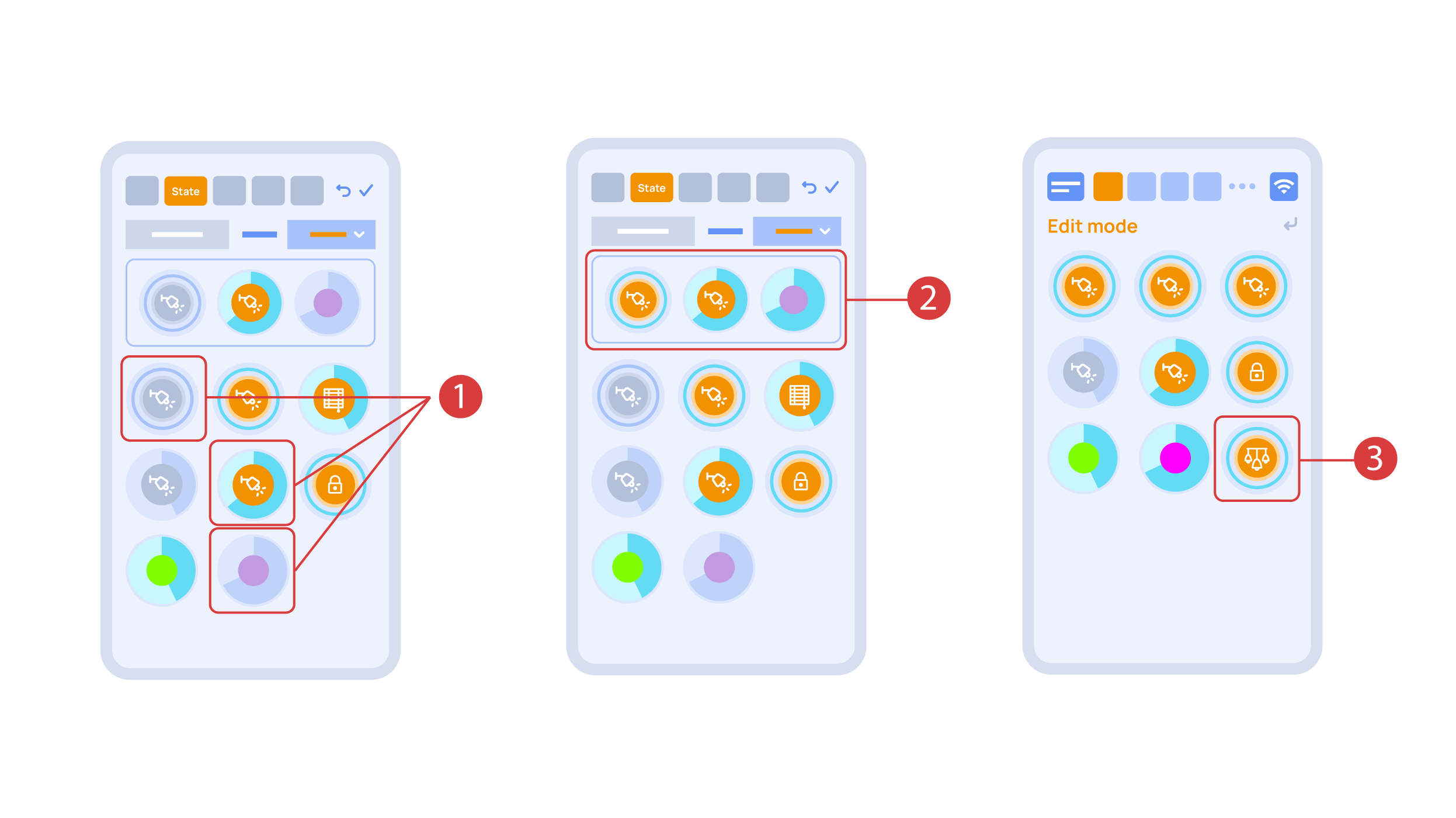
While you are in the Edit Mode, there is a ‘Setup’ ① icon in the additional menu.
Here in the ‘Structure’② tab we can see all the areas.
We can create new ones ④, rename them and move the elements around.
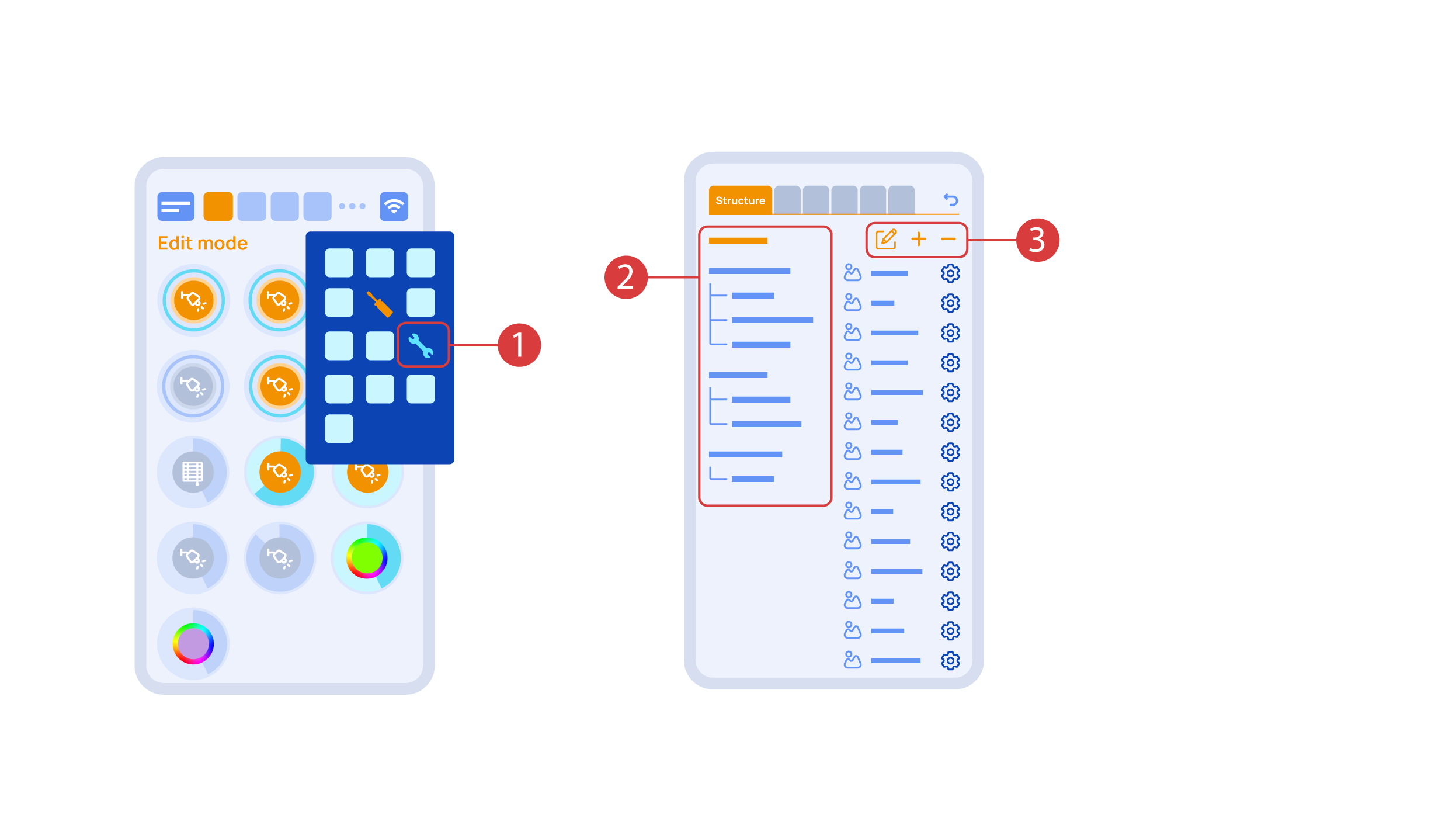
In the ‘Mikrotik’ tab ① you can see the current parameters of your router, which you can also connect to your local Wi-Fi network.
In order to do this, enter the Wi-Fi sub-menu, click the wlan1 interface configuration ②, after which choose the ‘station’ mode, choose a Wi-Fi network out of the list ③ of available ones and enter the connection password.
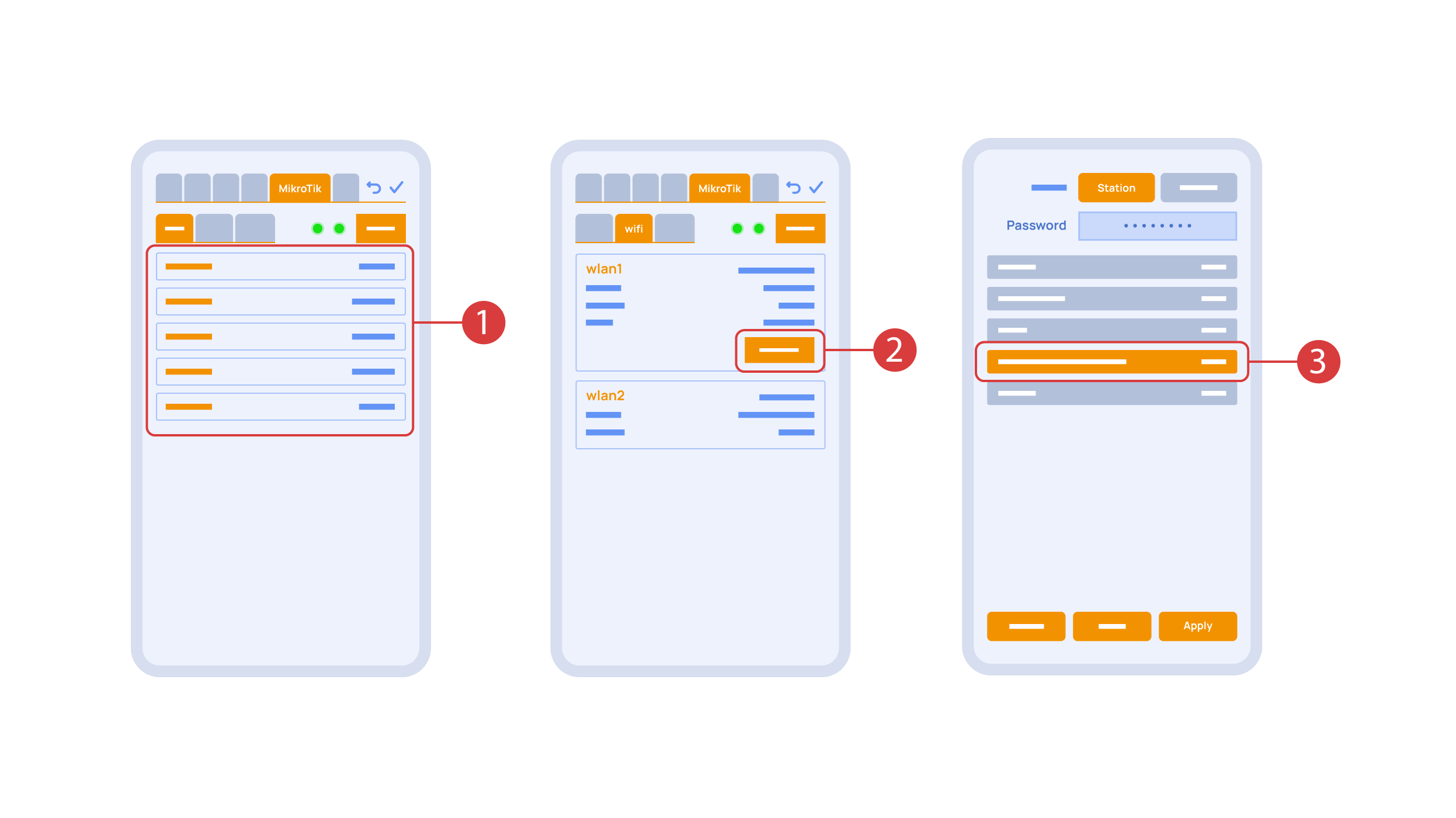
In the ‘Backups’ tab ① you can see the list of saved configurations, which can be restored if necessary.

For cloud access to the device, you do not need any extra settings. The app detects the absence of the system in your local network and automatically establishes the connection via the cloud.
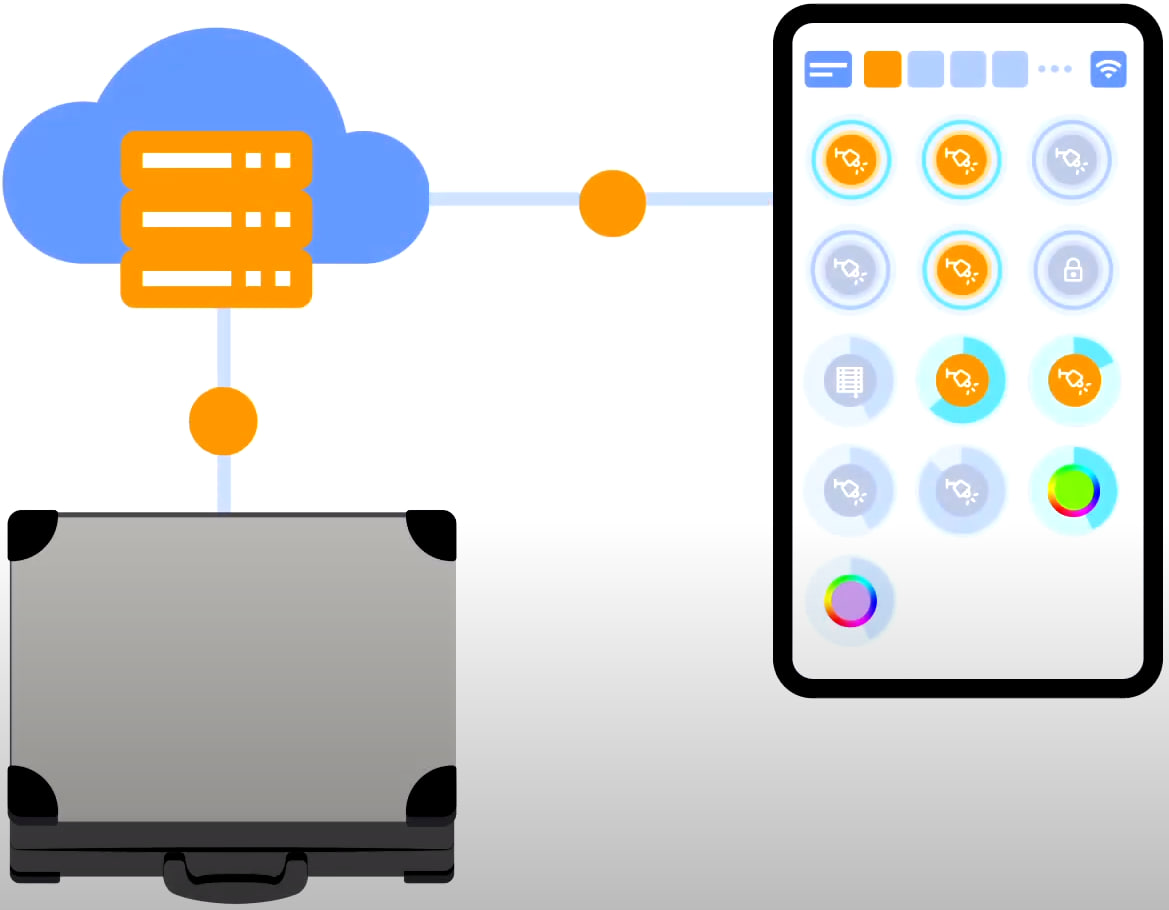
We thank you for watching this tutorial! If you have questions or need extra help, please do not hesitate to refer to our technical support team. See you in the next episodes!